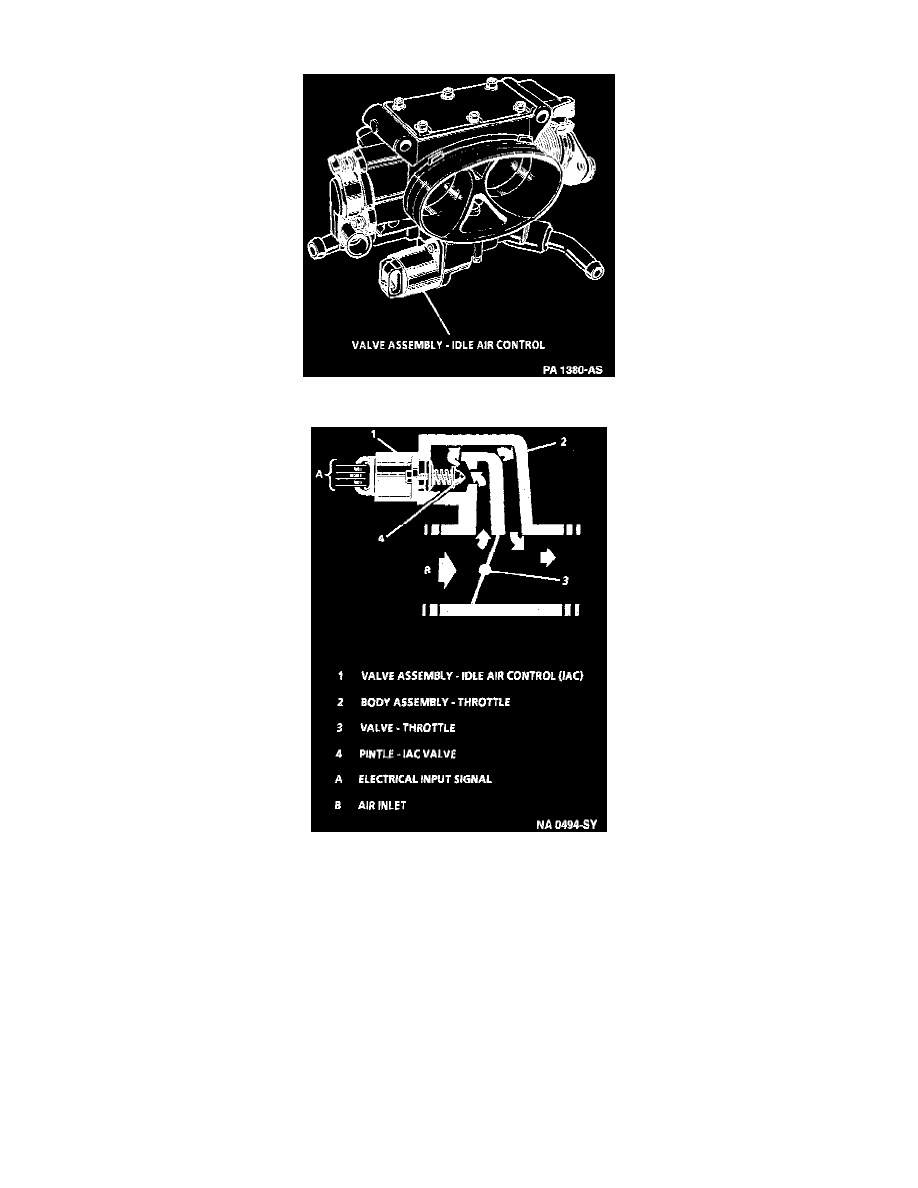Caprice V8-265 4.3L VIN W MFI (1995)

Idle Air Control (IAC): Description and Operation
Throttle Body
IAC Valve Flow
The purpose of the Idle Air Control (IAC) valve assembly is to control engine idle speed while preventing stalls do to changes in engine load.
The IAC valve, mounted in the throttle body, controls a portion of the bypass air. An orifice located between the throttle valves also supplies a constant
amount of bypass air. By moving a conical valve known as a pintle, IN, towards the seat (to decrease air flow) or OUT, away from the seat (to increase
air flow) a controlled amount of air can be bypassed. If engine speed is too low, more air is bypassed to increase RPM. If engine speed is too high, less
air is bypassed to decrease RPM.
The Powertrain Control Module (PCM) moves the IAC valve in small steps, called counts. These can be measured and displayed by a scan tool which
plugs into the Data Link Connector (DLC).
During idle, the proper position of the IAC valve is calculated by the PCM, based on battery voltage, coolant temperature, engine load, and engine RPM.
If the RPM drops below specification and the throttle valve is closed, the PCM senses a near stall condition and calculates a new valve position to
prevent stalling.
^
Engine idle speed is a function of total air flow into the engine based on IAC valve pintle position + crankcase ventilation valve flow + throttle
